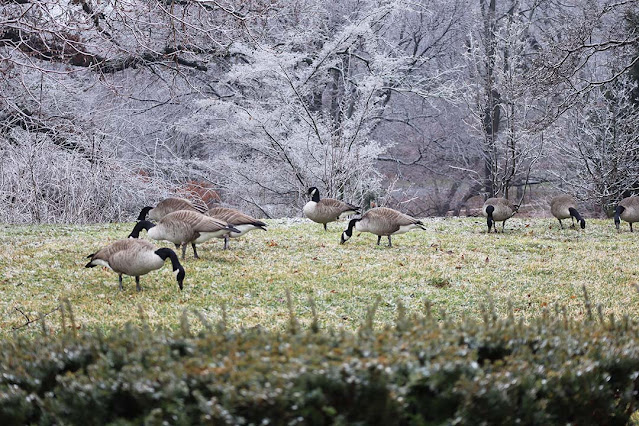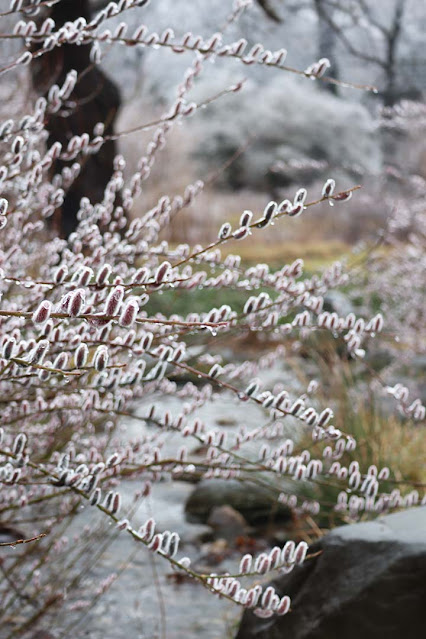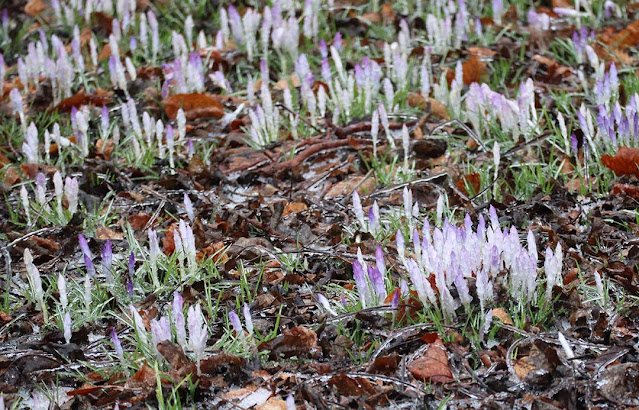There is an empty park a few blocks from where we live. Its beds have been bare for as long as I have known it (just over three years). It has benches, but it is barren.
It could be a place where pollinators and people feel good. Some bee-watching and butterfly therapy. Maybe a hummingbird or two.
It is a fact of never-ending wonder that New York City's mayoral budget allocates less - less - than 1% to the NYC Department of Parks and Recreation. It's closer to 0.5%. And it's not just about plants and greening: the department oversees sports facilities, playgrounds, tarmac stretches of basketball courts, community centers, lifeguard training. The list is endless. Plants come last.
Pandemic budget cuts have left everyone deeply backlogged and worse-off than before. Nobody has time, staff, or money. Yet where did everyone go, flee to, during the last two years? The parks. For classes, for exercise, for meetings, for work, for birthdays, for school, for everything.
Parks are green jewels in this populous city's crown. Privately-funded conservancies shoulder the burden of keeping iconic spaces like Central Park and Prospect Park (and so very many more) in working order. But small, incidental parks like the one in my hood fall between the weedy cracks unless someone takes a keen personal interest in them.

I discovered (that sounds quick, it was a meandering process) that this little park has an identity, but no name: it is b255o. It is a "sitting park". There's just not a lot of incentive to sit here. The fresh layer of wood chips may have been spread during its last inspection (December 2nd, if one looks it up). While I have approached the parks department and a stewardship program to see how we can formally initiate the procedure of adopting a park it will be a long time (I think) before I hear back. I did this all over ten years ago in Manhattan for a much larger, locked space; and that shuttered park is now an open, thriving space, but times change. It will take longer for the un-greased wheels to begin turning, in 2022.
So we're going guerilla. For now.
I'm holding my nose and jumping in. Which means I ordered 30 Allium bulbs and a sign to explain what's going on. Hoping it will attract some (welcome) attention and discourage dog owners from letting dogs in the beds. Making a commitment helps motivate myself, too. Two friends-through-my-walks have already offered their labor.
Now we just need, well, plants.
The demands on city plantings are high. They range from drought, to compacted or poorly draining soil, to pollution (dog pee and poop, salt, heavy metals), to theft by humans who want the plants for themselves, to old-fashioned stomping and crushing. So plant choices matter, and after that fingers must be crossed once they are in the ground.
The plants must tough enough for the climate, obviously (USDA Zone 7b). That's the easy part. But they must also be resilient enough to be able to grow without more than the occasional presence of a gardener, and especially, no supplemental watering: new plantings are vulnerable. So I expect setbacks and some teeth-gnashing.
As I think out loud here are some wish list plants that will hold up and become self-sufficient. Most are North American natives, but some are not. I'm thinking seasonal interest, benefits for pollinators and birds, and even some edible plants (in case someone is in desperate need of fennel fronds for their fish stew).
The space now is sunny, but in summer will be a mix of high, dappled shade, thanks to the plane trees nearby. The corner above will have direct sun. The choices below will evolve and will be influenced by what is available where, and when - these will hopefully be donations. Holler if you have some spare shrubs lying about.
B2550 Pollinator Garden
Shrubs:
2 Serviceberry (Amelanchier spp) - question mark; early flowers, midsummer fruit, vivid fall color
3 Black chokeberry (Aronia melanocarpa) - spring flowers, late summer fruit, beautiful fall color
3 Clethra/sweet pepperbush (Clethra alnifolia) - late summer flowers, scented, butterfly magnet
3 Dwarf fothergilla (Fothergilla gardenii) - mid spring flowers, vivid autumn leaves
3 Oak leaf hydrangea (Hydrangea quercifolia) - early summer flowers are a bee magnet, flowers persist through early fall, beautiful bronzing leaf color through fall
3 Rosa but what form and cultivar? - 'Knockout' is the municipal standard but the barren flowers provide nothing for bees
Perennials:
30 Alliums (ornamental, no-name brand) - tall, striking, disliked by squirrels, bee-magnets; acquired!
10 Anise-scented goldenrod (Solidago odora) - early fall flowers, pollinator-magnet, edible leaves and flowers
10 Bronze fennel - tall, gorgeous foliage, flowers for pollinators, leaves for butterfly larvae, self-seeding
10 Foam flower (Tiarella cordifolia) - early spring flowers, bees love em. Native (I have babies that will make babies)
6 Hyssop (Agastache foeniculum) - long-blooming, bee-favorite, scented foliage
3 Milkweed - (Asclepias - not sure what species, yet) pollinator magnets, lovely flowers, showy seed heads
6 Ostrich ferns (Matteuccia struthiopteris) - sculptural, makes many babies, sequesters heavy metals
6 Thimbleweed (Anemone virginiana) - early summer flowers, attractive seed heads, disliked by pests
6 Mountain mint (Pycnanthemum virginianum) - fragrant, edible leaves, pollinator magnet-flowers in summer
12 Violets - spring optimism, fragrance, weed-smothering, self seeding
Annuals:
Jewelweed (native Impatiens capensis) - attractive to hummingbirds, bumblebees, self seeds
Nicotiana (N. sylvestris) - statuesque, scented, attractive to hummingbirds
Papalo (Porophyllum ruderale) - people-pleaser, purely to make neighborhood Latinex cooks and eaters smile
Perilla/shiso/sesame leaf (Perilla frutescens) - self seeds (too freely), tall, striking, fragrant and edible leaves, drought tolerant, appealing to everyone
__________________
My Spring Classes at the NYBG

















































